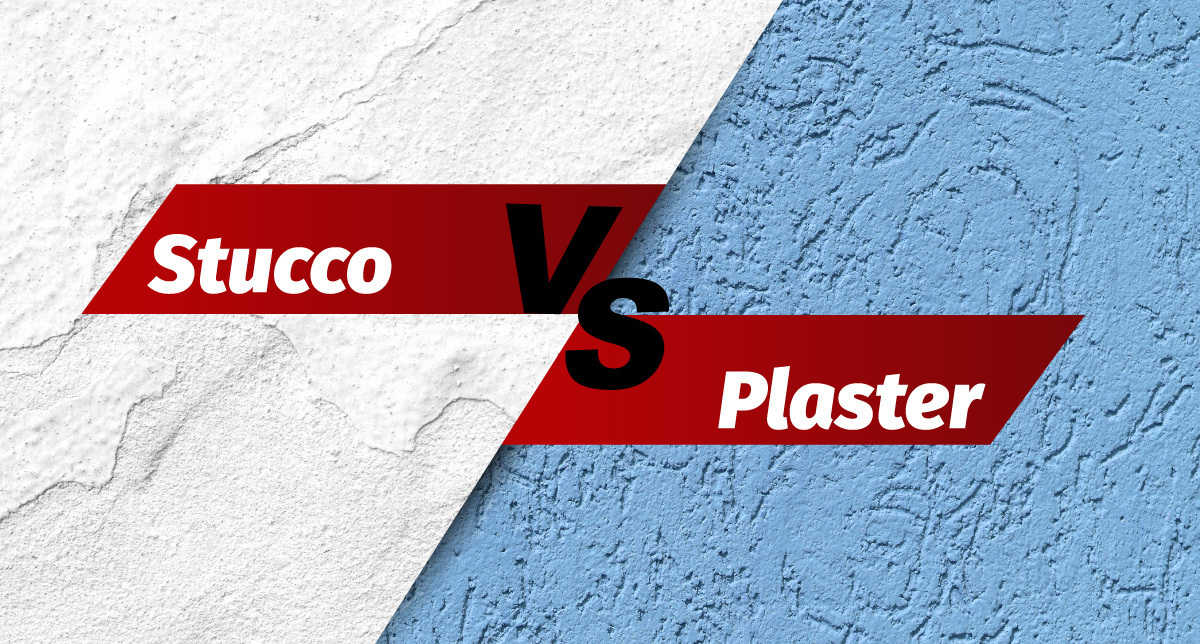
- Thu, 25 Mar 2021
- Maya Construction 1 Inc.
Stucco vs Plaster: Know the Main Differences Between These Building Materials
There are various building materials used for siding in residential construction. Each one offers unique benefits to your home. So, it may be overwhelming trying to choose one. On this occasion, we will focus on stucco vs plaster.
In a previous blog, we compared stucco to vinyl siding. While both offer unique benefits, stucco won the competition. Now, it’s time to compare it with plaster. Both materials are very durable and provide several advantages. But, there are some characteristics in which they differ.
If you want to know the differences between these materials in more detail, then you will not want to miss this blog. After you’re done reading, you’ll be able to make a decision on which to use for your home’s exterior. So, don’t wait any longer and learn more about stucco and plaster.
Stucco vs Plaster: How Do They Differ?
Besides being very durable, both stucco and plaster are also long-lasting. Some types of these materials are even fire-resistant. They even look somewhat alike in specific applications. For that reason, many people tend to mix them up.
But, each material has its strengths and weaknesses. Both stucco and plaster will offer different benefits for your specific needs. But, for this, you’ll have to learn about each one in detail.
Regarding stucco vs plaster, we’ll consider some factors. Both contain cement and water. Stucco uses Portland cement, while plaster uses gypsum. Their installation and repair processes are labor-intensive. Stucco can only be applied outside. Plaster can be applied indoors and outdoors, so it is more versatile.
Now, let’s learn about each characteristic in more detail.
Composition: What Are They Made Of?

First, we must discuss what stucco and plaster are made of.
Back in the day, people made stucco from lime, sand, and water. However, modern stucco uses Portland cement, lime, and water. This current mix is also known as cement stucco. People started using Portland cement because it created a harder and more durable mix.
Plaster is similar to stucco in its composition, with the only difference that it is gypsum-based. So, the main ingredients in plaster are gypsum, cement, and sand.
But, before the 1900s, lime plaster was very popular since gypsum plasters were more expensive. However, this lime-based plaster was more challenging to mix as you would have to wait for the lime to settle before you mixed it with the sand.
Installation and Repair: Is It Labor Intensive?
Experts should handle the installation process for both stucco and plaster. This is because it is a labor-intensive job.
The installation process for stucco involves three layers over metal lath. The first layer is the “scratch” coat, the second is the “brown” coat, and the final and top layer is the “finish” coat.
If you want to install synthetic stucco or EIFs, then it would involve more layers than traditional stucco.
The process of installing plaster is somewhat similar. The difference is that contractors use a metal mesh for structural support.
For any repair projects, we also recommend hiring a professional. However, if it is a small hole or crack, you can attempt to repair the stucco on your own. If you don’t have the proper materials and tools, then leave it to someone experienced.
Application: Where Can You Use Them?

Both building materials are durable and long-lasting. But, they differ in their application methods. Don’t make the mistake of thinking that you can apply both materials in the same places just because they look alike.
If you want a material that you can use on both exterior and interior walls, then we recommend plaster. This is because you can apply plaster to different types of surfaces.
For example, you can apply plaster over your concrete exterior walls. Also, you can install it over drywall boards in your home’s interior. This material works great for both walls and ceilings as well.
Stucco and plaster may look the same in texture and thickness. But, stucco actually has a rougher texture. For that reason, stucco should only be applied on exterior surfaces.
Another difference is that you have to prepare the surface before applying stucco correctly. If you don’t do this, then the stucco may not stick properly. Plaster, on the other hand, does not require the same surface preparation as stucco.
Versatility: What Can You Create with Them?

When it comes to its exterior use, plaster is much more versatile than stucco. This is because you can pour plaster into molds and create different designs. What you do is place the plaster into the molds, let it set, and get unique designs for your exterior walls.
With stucco, you can’t do this. But, you can create various finishes with stucco. Even though you can only apply stucco to some surfaces, you can still have beautiful finishes.
Can You Install Stucco Over Plaster?
Now that we discussed the differences between these building materials, it’s time to know if you can install stucco over plaster. If you properly prepare your exterior plaster walls, then you can apply stucco over them.
The process of applying stucco over plaster will involve cleaning the walls. You have to ensure that you get rid of any dirt, dust, and grime. Over time, plaster can collect dust and dirt that is carried in the air.
If you don’t clean them properly, then the stucco will not stick. Once the plaster is clean and dry, you can start applying the stucco. You have to make sure that the wall is completely dry. You don’t want any trapped moisture in the walls as it can make the stucco crack or chip in the future.
So, this is an excellent option if you don’t want plaster for your exterior walls anymore.
If you’re still considering stucco vs plaster but can make up your mind, we invite you to contact our stucco contractors. We will discuss your project with you and advise you on which option is better.
Upgrade your home’s exterior today, and call us to make your appointment!
